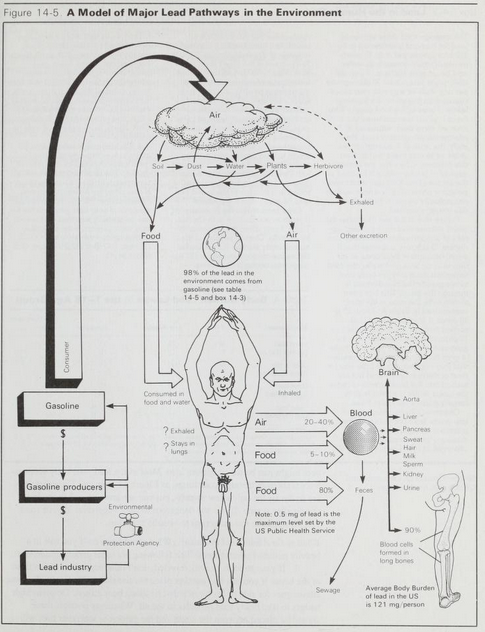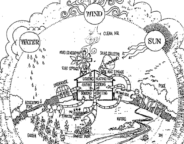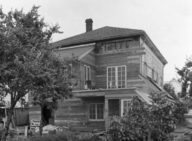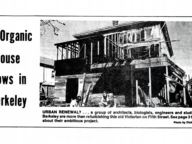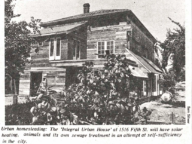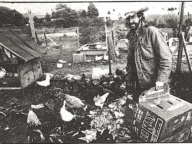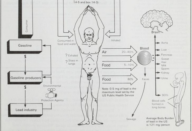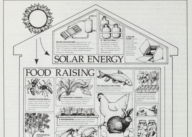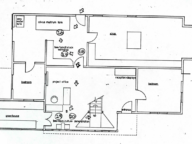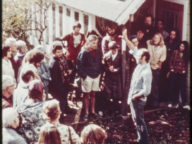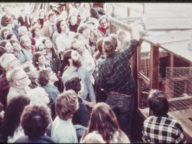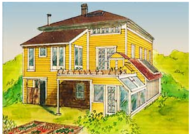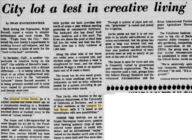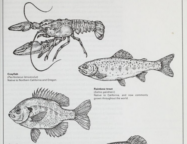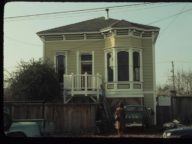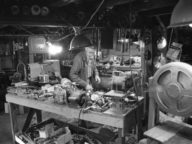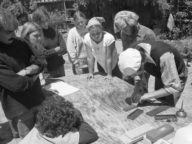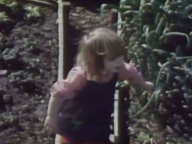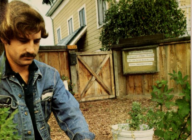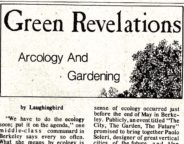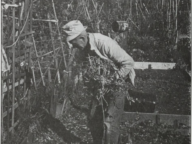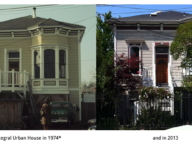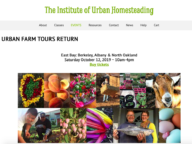The above photo depicts the “Major Lead Pathways in the Environment”. It shows a man at the center of an ecosystem of inputs and outputs. To the left, toxic lead enters the system via gasoline production and use. The lead then enters ecological processes like air and food production, which feed and nourish the man. However, the lead begins to enter and accumulate in the man’s body, leading to a slow spread of the metal to other parts of his body. It presents the dangers of modern industrial production upon the human body, and how it is an inescapable fate for many living in the world. It sets up the new ways of food production and thinking coming from the Integral Urban House.
Chapter 1 from the book “The Integral Urban House: Self-Reliant Living in the City” presents a new way of urban eco-living. Rising world fuel use and dwindling fuel reserves, as well as high rates of carcinogens in American drinking water, set the scene for why this house became so necessary in a polluted world disconnected from nature. This model home was an experiment in production-centered living, compared to the consumption-centered living that permeated typical American suburban life. The chapter mentions other examples of this self-reliant urban living across the country, such as the Ouroboros House in Minneapolis, the East Village Windmill in New York City, and the Institute for Local Self-Reliance in Washington D.C.. The Integral Urban House was not alone.
The chapter discusses behavior changes as a critical part of the idea of an integral urban house. How can people modify their lifestyles to “bring them into harmony” with their environment? Viewing food and yard scraps not as waste, but as potential garden compost to nourish a vegetable garden was a way of altering behaviors and perceptions in a more holistic way.
